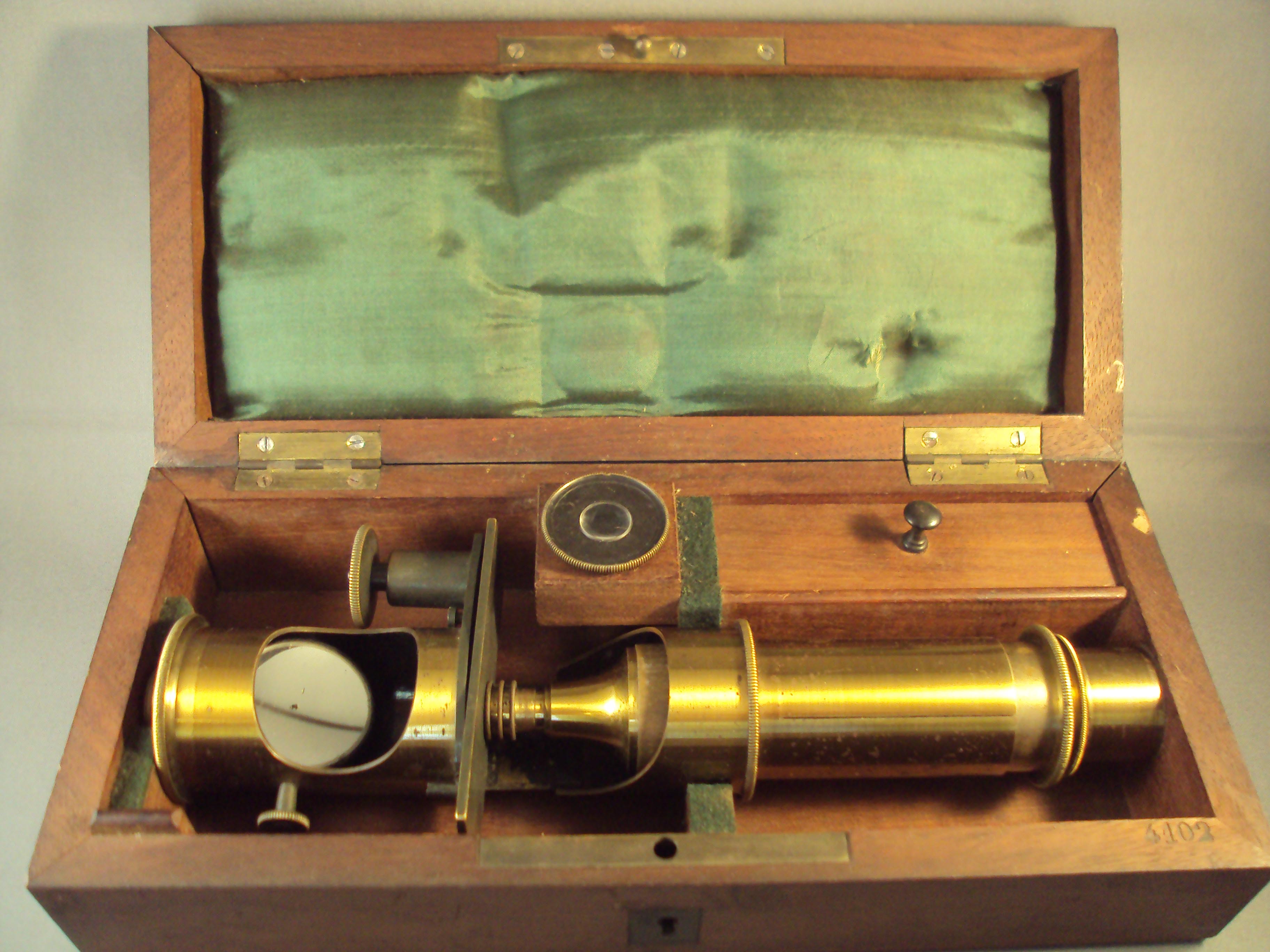MICROSCOPE-ANTIQUES.COM © 2013-15.
CASE-MOUNTED DRUM MICROSCOPE:
c. 1865
Signed on the body tube: E Hartnack Suc'r De G Oberhauser Place Dauphine 21 Paris
.
MODEL: Model 1, or 'Microscope pour hospice'
Serial Number: 4102 (on the case)
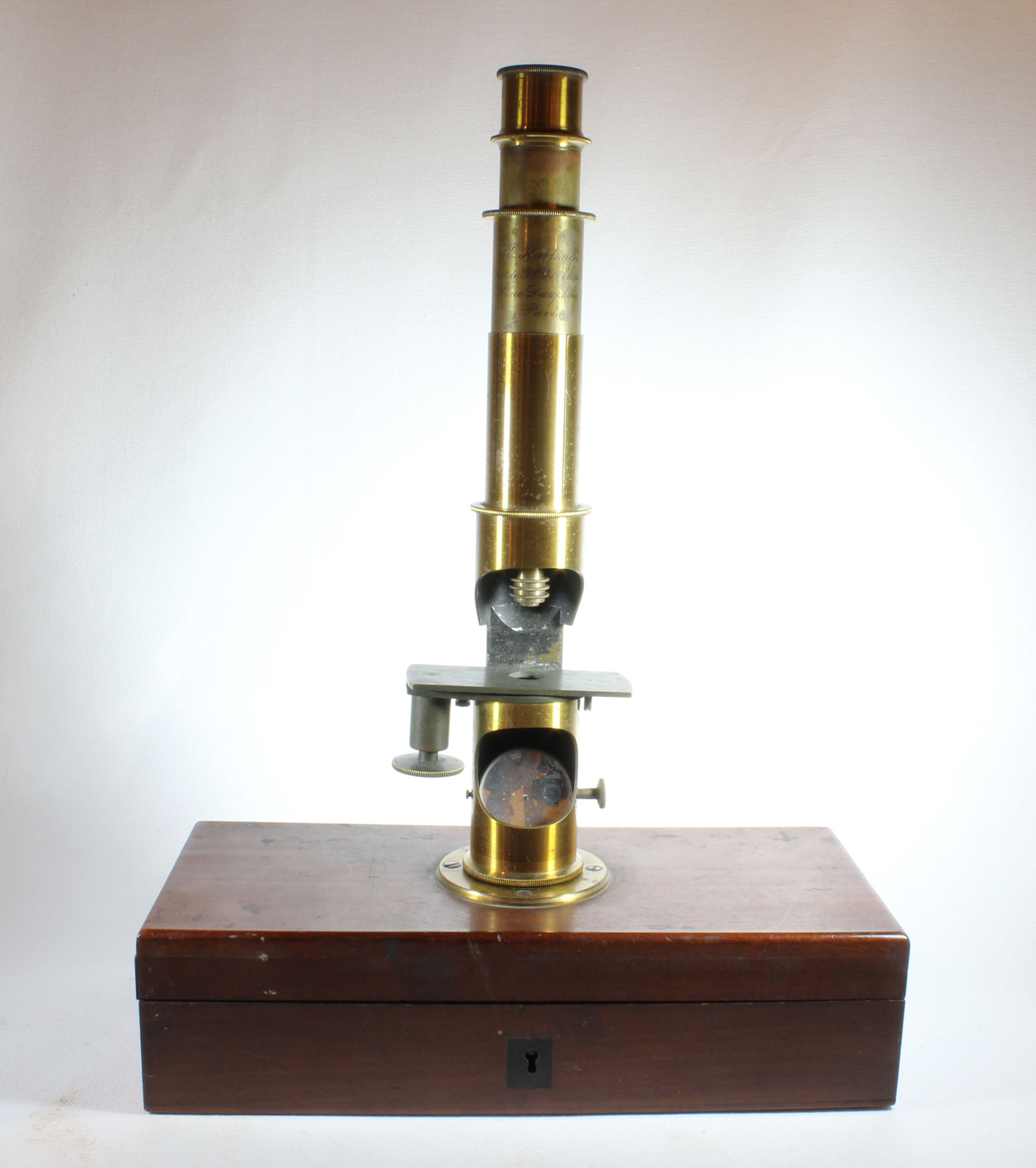
DESCRIPTION
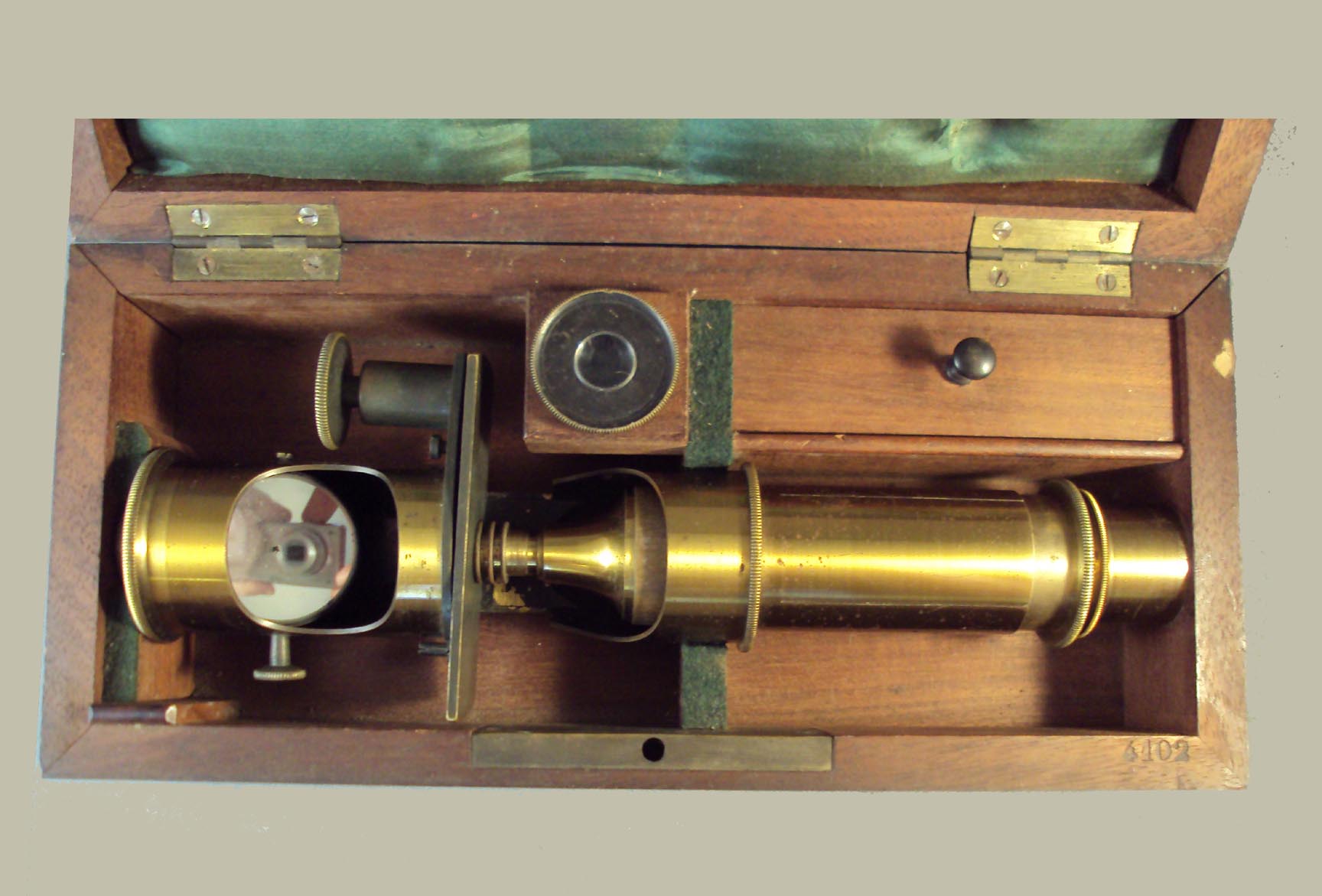
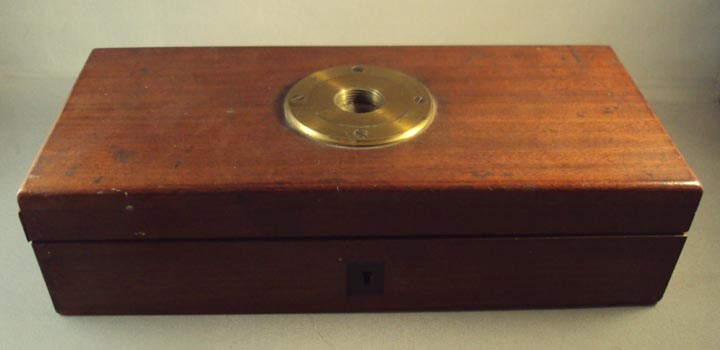
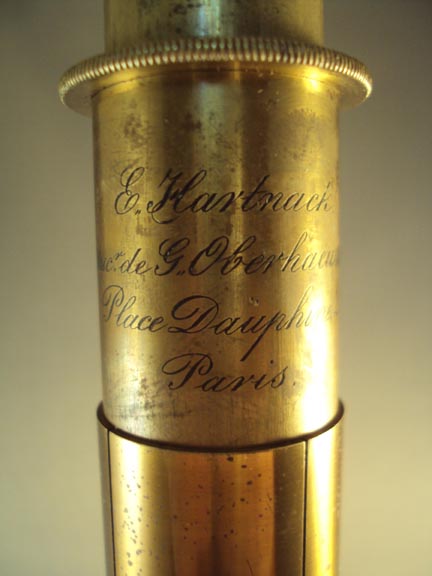
A good example of a higher quality case-mounted drum microscope, with original case. The microscope is signed in script,
as is a double-pillar microscope in this collection, 'E. Hartnack, Suc'r De G Oberhauser, Place Dauphine 21 Paris.'
It has a wide screw on the bottom which screws into the boss on the top
of the case; it cannot stand alone. Coarse focus is by push-pull and
fine focus by screw tilting the right side of the stage. There is a
three-button objective. The microscope
has a draw tube. There is a fixed aperture through the stage. The
mirror rotates via a knob on the left side.
It stores in the fitted hardwood case with cushioned green velvet on
the inside of the top lid. There is a small compartment in the case for
accessories or slides (none currently present). The eyepiece must be
removed
and placed in its compartment in order for the scope to fit in its
case.
HISTORY OF HARTNACK MICROSCOPES
This microscope was the one recommended by Golding Bird, as early as 1844, as an example of an inexpensive compound microscope that could be satisfactorily used for urinalysis. Originally an Oberhauser product, its production was continued for many years by Edmund Hartnack.
The microscope was made by Edmund Hartnack, who, as the signature says,
was the successor to Georges Oberhauser. Hartnack was married to
Oberhauser's niece. Oberhauser and Hartnack went into partnership in
1857, Hartnack taking over in 1860, remaining in Paris until 1870.
Prazmowski took charge in Paris after 1870, forming Hartnack and
Prazmowski, when Hartnack moved to Potsdam, Germany. As with many
French makers, Hartnack's early cataloges are simply lists and not
illustrated. The invention of the drum microscope has been attributed
to the Englishman Benjamin Martin. Compared to other designs it was
very inexpensive to construct. It was produced with many different
variations
and varied also in quality and usability. Although not the best design,
its low cost made it popular and they were produced in France even into
the second quarter of the twentieth century. Sears catalogs from the
1930's still show drum microscopes, although by then only smaller and
lighter examples were sold, and mainly for amateurs, students, and
children.
Drum microscopes of the higher quality shown here were long gone by
that time.

